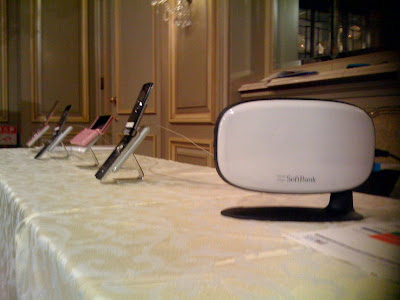 Ubiquisys announced its Femto-Engine software femtocell last week. Since then I’ve had quite a few people ask me what’s the difference between a soft femtocell and a femtocell reference design.
Ubiquisys announced its Femto-Engine software femtocell last week. Since then I’ve had quite a few people ask me what’s the difference between a soft femtocell and a femtocell reference design.A femtocell reference design, as is currently offered by a few companies, comprises some of the basic hardware and software components that make up a femtocell. What you get are the basic software stack components such as RRC, RANAP, GTP plus some generic bolt-ons such as a TR-069 client. On the hardware side you get a baseband and RF chip recommendation plus recommendations on some of the ancillary components needed. Well this is a basic starting point. Having developed and commercially deployed both consumer and enterprise femtocells we at Ubiquisys are very aware of how much work there is in the full realisation. Ask our competitors such as ip.access and Alcatel-Lucent and I’m sure they would hold the same view.
A femtocell reference design represents approx 10% of the work for a femtocell company to actually bring a commercially viable femtocell to market. What makes it even more significant is that the remaining 90% includes all the challenging and high value software that creates a commercial femtocell. Features such as Self Organising Network functionality, Radio Resource Management algorithms proven out in the real world, bespoke operator customisation, femtocell specific features for supplementary services and emergency calling, 3G handset and macro network integration/test (massive task), provisioning & management system integration, diagnostic tools, etc. The list is almost endless and as you can see does not mention RRC and RANAP.
The hardware is a container for the software, the key being cost-optimisation. This is why Ubiquisys provides a femtocell Hardware Blueprint to manufacturers best qualified to build these home and enterprise products.
A good analogy is in the creating of a magnificent building like the Sydney Opera House. The reference design equates to some of the bricks, mortar, glass, pipes and cables needed for the construction. These are all important but the challenge and ultimate success is in the architectural design and skilled craftsmanship that makes the building a reality.
I don’t want to give the impression that the components such as the baseband and RF chip sets and firmware are simple and easy to design and develop. Far from it - the silicon design complexity and firmware in a component like the baseband chip is very significant and requires skills and experience that are found in but a few companies such as Percello, picoChip, and Qualcomm.
In the UMTS world there have been 5 public commercial femtocell launches; SoftBank, StarHub, Vodafone UK, AT&T and SFR. It’s no co-incidence that not one of these has been built on a reference design; all are bespoke femtocells designed and built by experienced and skilled companies ip.access, (AT&T) Alcatel-Lucent (VF UK), Huawei (StarHub) and Ubiquisys (SoftBank and SFR).












